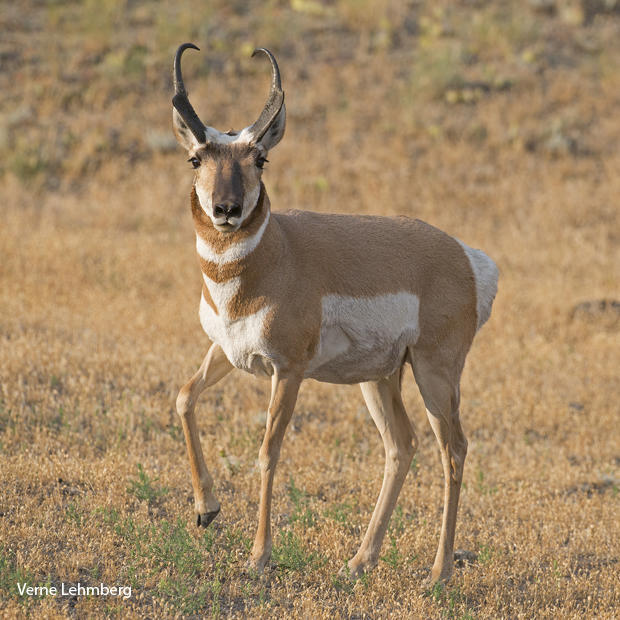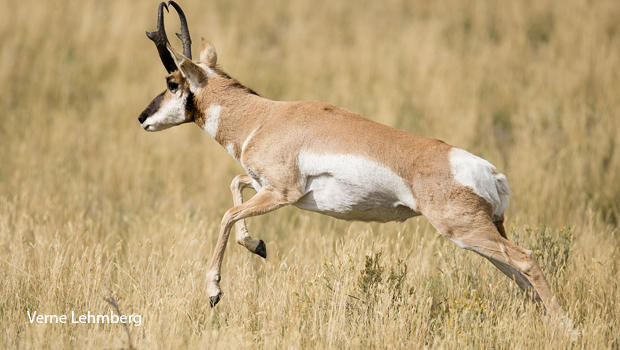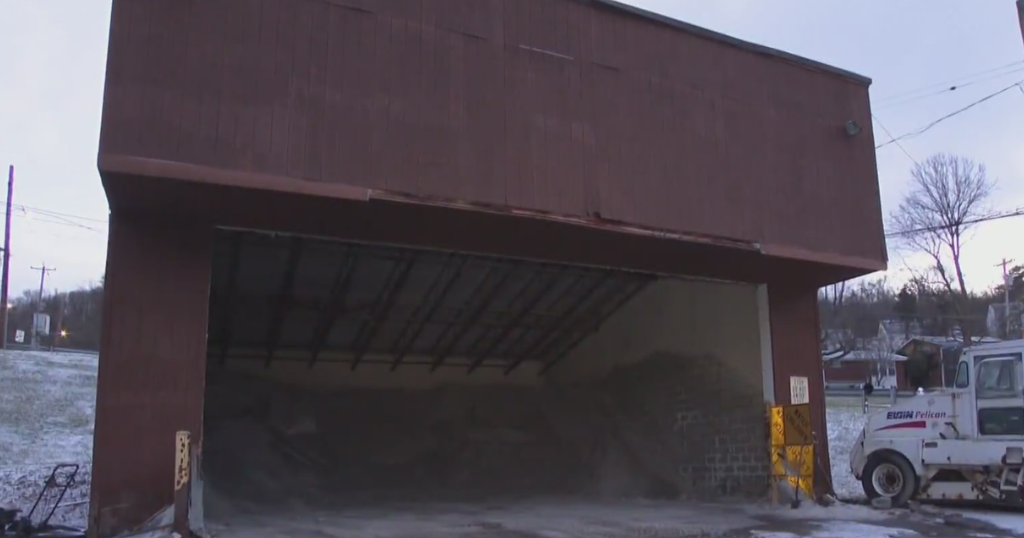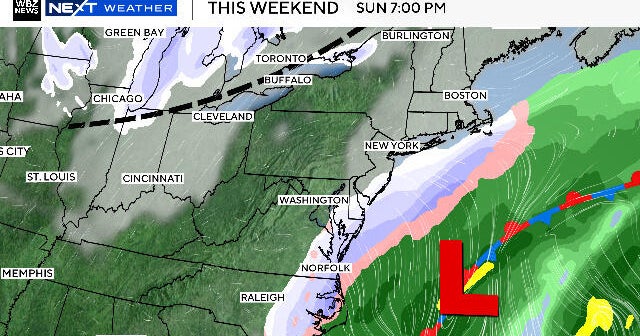Nature up close: The unique migration of the Pronghorn
By "Sunday Morning" contributing videographer Judy Lehmberg.
We spend half of each year in Montana, just north of Yellowstone, from the first of May until we leave at the end of October. (Being the basic Texas wusses we are, we don't do Montana winters.)
But this year the weather tricked us. We had, literally, a few days of fall at the end of September and then went straight into winter near the beginning of October. Winter came so fast the leaves never turned fall colors – they just died and fell off the trees. Then, it got even colder, -10° one night. Not so bad if you live in a house, but we live in a travel trailer with exposed water pipes. We were definitely out of our comfort zone, so it was past time to move south. Now we're in northern Utah where it was a balmy 22° last night.
Our aversion to winter got me to thinking about the animals in the Greater Yellowstone Ecosystem. How can they survive in heavy snow and temperatures well below zero for six or seven months? The answers vary depending upon the species.
Most of the birds fly south. Some even go as far as South America, but a few – ravens, jays and dippers – don't leave, although they often descend to lower elevations. Bears, ground squirrels and marmots hibernate. Pikas, uniquely adapted for low temperatures, spend the long winter under the snow eating the vegetation they'd spent the summer stockpiling. Most of Yellowstone's large mammals, such as elk, mule deer and pronghorn antelope, move to lower elevations along with female bison and their calves. But many male bison remain in the park using their huge heads to "bulldoze" snow off the grass. Seems like a lot of work for a little grass, but their survival is a testament to their impressive effectiveness.
In the Greater Yellowstone Ecosystem, the annual migration of deer, elk and bison has been hampered by human development. In the fall elk used to move down from the higher elevations of Grand Teton National Park through what is now the town of Jackson, Wyoming, then south to lower elevations. For well over 100 years the town has blocked their movement south. In 1912 the National Elk Refuge was set aside north of Jackson. The refuge managers provide forage for what is now the largest concentration of elk in the world. (The Jackson Hole Boy Scouts may be the richest scout troop in the world, as every spring they collect the elk's shed antlers at the refuge and auction them, making more than $175,000 a year. They donate 75% of that money back to the refuge and 25% to Boy Scouts' Friends of Scouting dues.)
Like the elk attempting to migrate through Jackson, most of the other mammalian migration routes in the U.S. have been dissected by subdivisions, roads, towns, etc., and no longer exist. But there is one, the Path of the Pronghorn, the longest remaining migration route in the lower 48 states still active today.
Evolutionarily, pronghorn antelope are curious animals. Although they are called antelope, they aren't true antelope. They are alone in a unique family, Antilocapridae, which refers to a combination of antelope and goat-like characteristics. Externally they look similar to African antelope, although they do differ from true antelope which have horns they don't shed. Pronghorn don't shed the inner, bony portion of their horns, but they do shed the black, outer sheath. Internally they are similar to goats, especially their multi-chambered digestive system. (Although they don't look like them phylogenetically, they are more closely related to giraffes than antelope or goats.)
Pronghorns are the second-fastest land animals in the world; only the African cheetah is faster. They are capable of hitting 60 miles per hour, with sustained speeds of 40 mph. It is thought they evolved to run that fast – much faster than any living North American predator – when a now-extinct American cheetah lived here. In a different genus from the African cheetah, it probably had similar hunting and speed characteristics. The two species survived in a predator/prey co-evolutionary arms race. The slower pronghorn got caught and eaten, while the faster ones survived and passed their speed genes to the next generation. American cheetahs have been extinct for 10,000 years, so why are pronghorn still so fast, since no existing potential predator can catch one? Evolutionarily, there is no reason for them to move more slowly, thus the pronghorn retains its high-speed capabilities.
Pronghorn antelope are fast, but that doesn't help them survive in the deep snows of Grand Teton National Park winters. So, they move south, but they don't attempt the same route as the elk. Instead they move along the Gros Ventre River to a divide separating that river from the upper Green River. They cross the divide and follow the Green River down to spend the winter in the Green River Valley below the town of Pinedale, Wyoming. They have been making this journey for at least 6,000 years.
This well-worn migration path has been threatened by a major highway the pronghorn must cross; fences; the expansion of subdivisions; and increasing numbers of oil and gas wells. To alleviate these problems, in 2008 the United States Forest Service established a designated corridor for their migration, the Wyoming Path of the Pronghorn. This 93-mile route came about as a result of studies by the Wildlife Conservation Society, the University of Wyoming, Grand Teton Park, the U.S. Forest Service, the Bureau of Land Management, and Wyoming Game and Fish. One of the major reasons for the path's success was the Wyoming Department of Transportation's $10 million construction of a wildlife bridge over the highway, along with several wildlife underpasses and fences, to funnel wildlife to the crossings. They figured the amount of money saved in reduced animal-vehicle accidents would recover the cost. The Bureau of Land Management designated the migration corridor as an Area of Critical Concern, limiting gas well drilling. Land trusts replaced fences to ones that allowed antelope to go under and deer over them, and maintain the land for grazing rather than creating new subdivisions. Due to all of the above agencies working together, the migration path remains open and available to the pronghorn.
The bridge is covered in soil and grass to look as natural as possible. The highway department even created eight-foot-tall berms on either side so the pronghorn couldn't see the traffic below. In the fall of 2008, wildlife biologists watched and waited. Would the fences funnel the pronghorns to the bridge? Would they cross it? The pronghorns arrived on schedule and, as if someone had sent them detailed instructions, they followed the fences and (at first, hesitantly) crossed the bridge. It worked! And now the adults have taught the younger ones their new migration path.
To view a short movie commissioned by the Wildlife Conservation Society on the pronghorn migration and them crossing the bridge, click on the video player below.
Judy Lehmberg is a former college biology teacher who now shoots nature videos.
See also:
- Judy Lehmberg (Official site)
- Judy Lehmberg's YouTube Channel
To watch extended "Sunday Morning" Nature videos click here!







